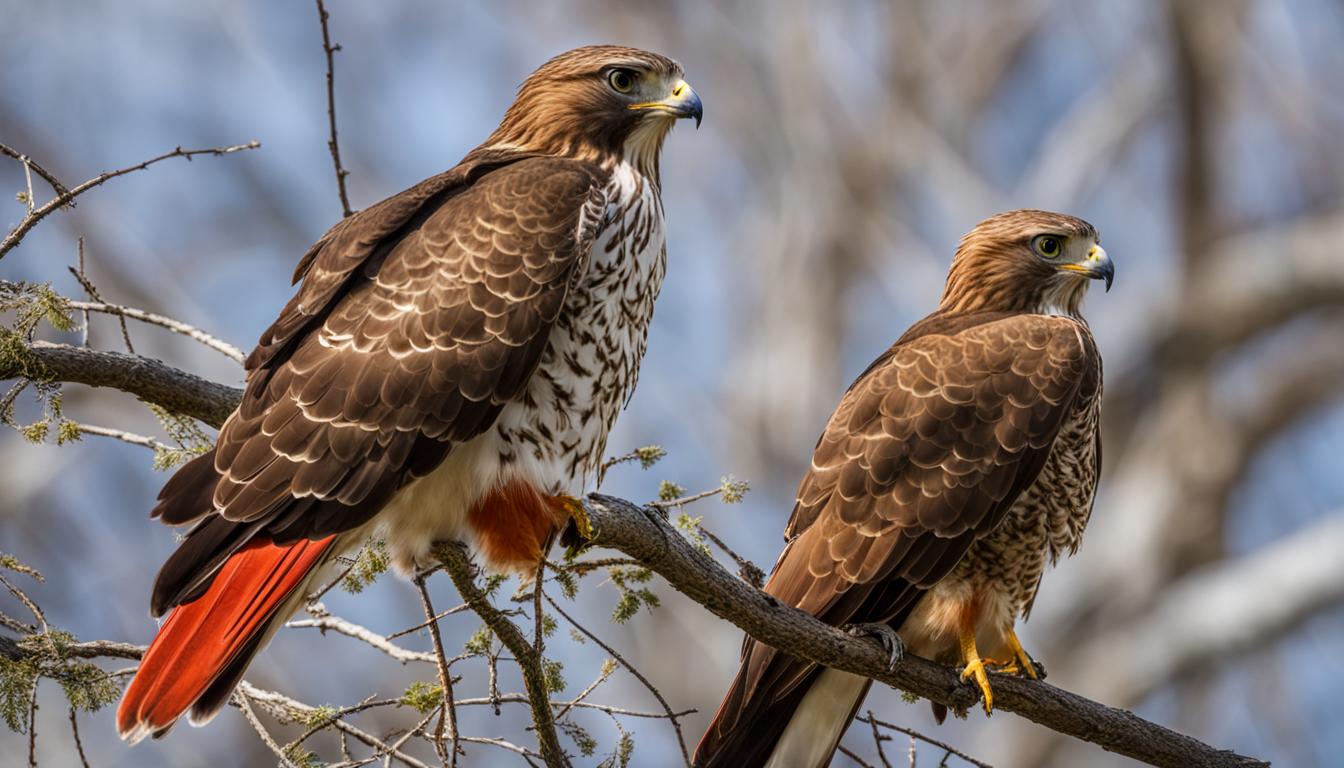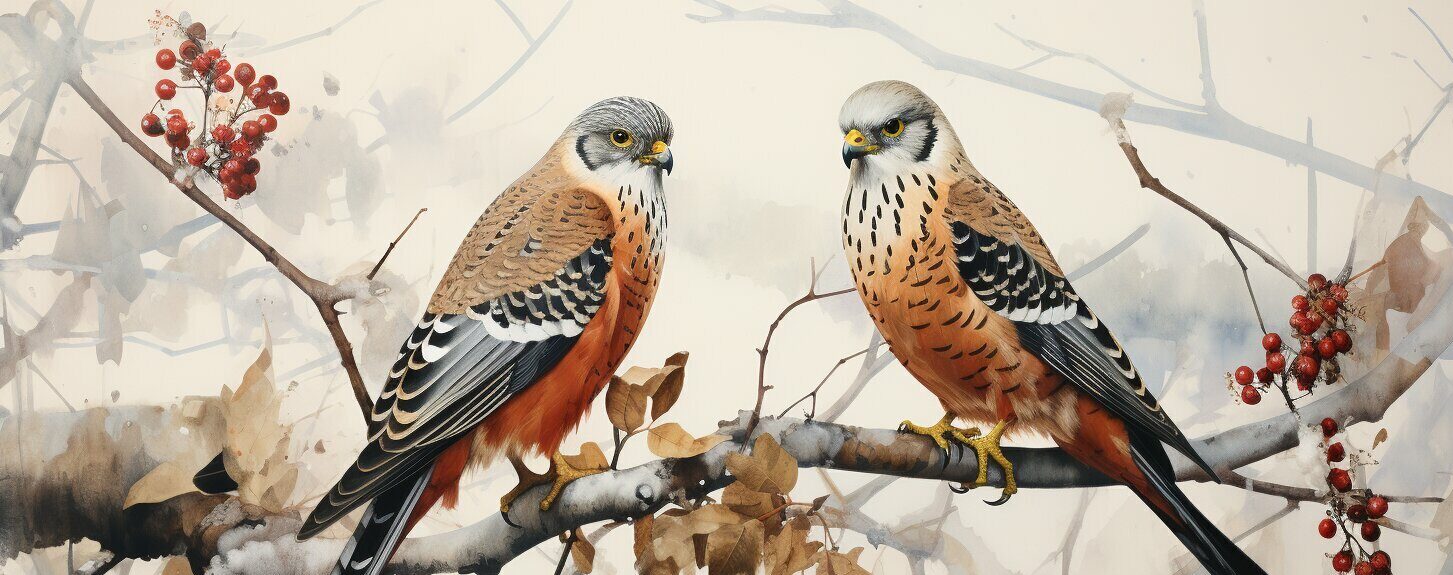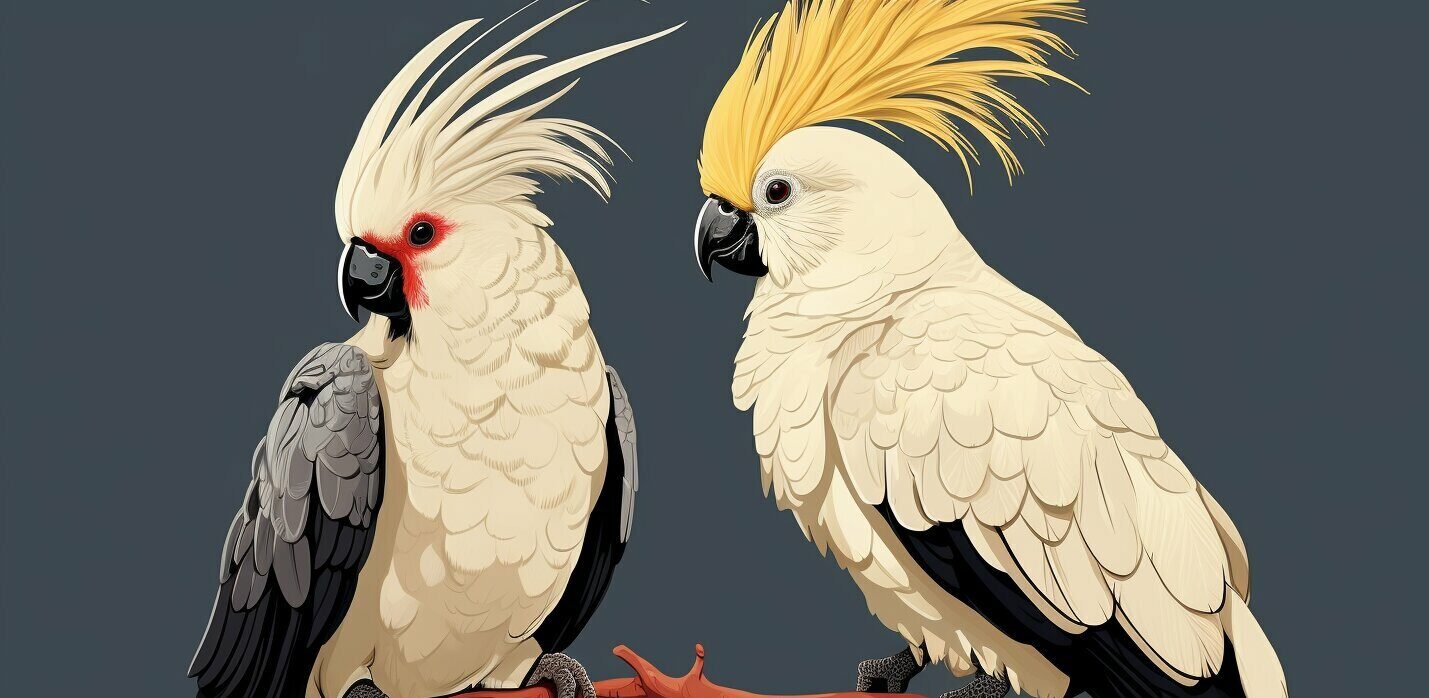Red-Tailed Hawks and Broad-Winged Hawks are two distinct species of hawks with noticeable differences in their physical characteristics, habitats, behaviors, and migration patterns. Understanding these differences can help identify and appreciate these majestic birds of prey.
Red-Tailed Hawks have a prominent red tail, while Broad-Winged Hawks have a banded tail. Red-Tailed Hawks are larger in size and have a broader wingspan compared to Broad-Winged Hawks. The two species also differ in their preferred habitats, with Red-Tailed Hawks commonly found in open areas and Broad-Winged Hawks preferring wooded habitats. Additionally, their migration patterns vary, with Broad-Winged Hawks forming large flocks during fall migration, while Red-Tailed Hawks migrate individually or in small groups.
Key Takeaways:
- Red-Tailed Hawks have a red tail, while Broad-Winged Hawks have a banded tail.
- Red-Tailed Hawks are larger with a broader wingspan compared to Broad-Winged Hawks.
- Red-Tailed Hawks prefer open areas, while Broad-Winged Hawks prefer wooded habitats.
- Broad-Winged Hawks form large flocks during fall migration, while Red-Tailed Hawks migrate individually or in small groups.
- Understanding the differences between these species can aid in their identification and appreciation.
Physical Differences
When comparing physical characteristics, the red-tailed hawk and the broad-winged hawk have distinct differences that set them apart.
The red-tailed hawk showcases a reddish-brown coloration on its upperparts and has a white underbody. Its most distinguishing feature is the prominent red tail, which is where it derives its name from. In terms of size, this hawk is larger, measuring around 18-26 inches in length, with a wingspan of approximately 40-56 inches.
On the other hand, the broad-winged hawk has a brown upper body and a white underbody. Its tail is banded black and white, providing a unique pattern. In comparison to the red-tailed hawk, the broad-winged hawk is smaller, measuring around 13-17 inches in length, with a wingspan of about 31-35 inches.
| Red-Tailed Hawk | Broad-Winged Hawk | |
|---|---|---|
| Coloration | Reddish-brown upperparts, white underbody | Brown upper body, white underbody |
| Tail | Prominent red tail | Banded black and white tail |
| Size | 18-26 inches in length, wingspan of 40-56 inches | 13-17 inches in length, wingspan of 31-35 inches |
Comparing Physical Characteristics:
- The red-tailed hawk has a reddish-brown coloration on its upperparts, while the broad-winged hawk has a brown upper body.
- The red-tailed hawk has a prominent red tail, while the broad-winged hawk has a banded black and white tail.
- The red-tailed hawk is larger, measuring 18-26 inches in length, with a wingspan of 40-56 inches, whereas the broad-winged hawk is smaller, measuring 13-17 inches in length, with a wingspan of 31-35 inches.
Habitat and Distribution
Understanding the habitat and distribution of Red-Tailed Hawks and Broad-Winged Hawks is crucial for appreciating their ecological roles and conservation needs.
Habitat
Red-Tailed Hawks are incredibly adaptable and can be found in a variety of habitats throughout North America. They are commonly observed in open areas such as grasslands, deserts, agricultural fields, and even urban environments. However, they are also known to frequent wooded habitats, river valleys, and mountainous regions. These hawks are opportunistic hunters, using their keen eyesight to spot prey from a high vantage point in their preferred habitat.
On the other hand, Broad-Winged Hawks have a more specific habitat preference. These hawks thrive in large deciduous or mixed deciduous-evergreen forests, where they find suitable nesting sites and ample prey. They are more dependent on forested habitats for both breeding and foraging. The dense cover of trees provides protection for their nests and allows them to successfully raise their young.
Distribution
Red-Tailed Hawks have a widespread distribution across North America. They can be found from Alaska and northern Canada down to southern Mexico and Central America. Their populations are also established in the Caribbean islands. This wide range and adaptability have contributed to the success of Red-Tailed Hawks as a species.
Broad-Winged Hawks have a more limited distribution compared to Red-Tailed Hawks. They breed primarily in the northeastern and central regions of North America, including parts of Canada and the United States. During winter, they migrate to southern Mexico, Central America, and northern South America. Their migration routes are remarkable, often spanning thousands of miles, showcasing the importance of suitable habitats along their migratory path.
| Red-Tailed Hawks | Broad-Winged Hawks | |
|---|---|---|
| Habitat | Open areas, woodlands, deserts, mountains | Large deciduous or mixed deciduous-evergreen forests |
| Distribution | Widespread across North America, including Caribbean islands | Primarily northeastern and central North America, migrates to southern Mexico, Central America, and northern South America |
Understanding the habitat and distribution of these two hawk species provides valuable insights into the ecosystems they inhabit and the conservation efforts needed to protect them.
Behaviors and Migration
Red-Tailed Hawks and Broad-Winged Hawks have distinct behaviors and migration patterns that set them apart.
Red-Tailed Hawks are known for their soaring flight and impressive hunting skills. They can often be seen perched on tall structures, such as trees or utility poles, while scanning the surroundings for prey. These hawks are solitary hunters and primarily feed on small mammals, birds, and reptiles. Their excellent vision and agility make them formidable predators in their chosen habitats.
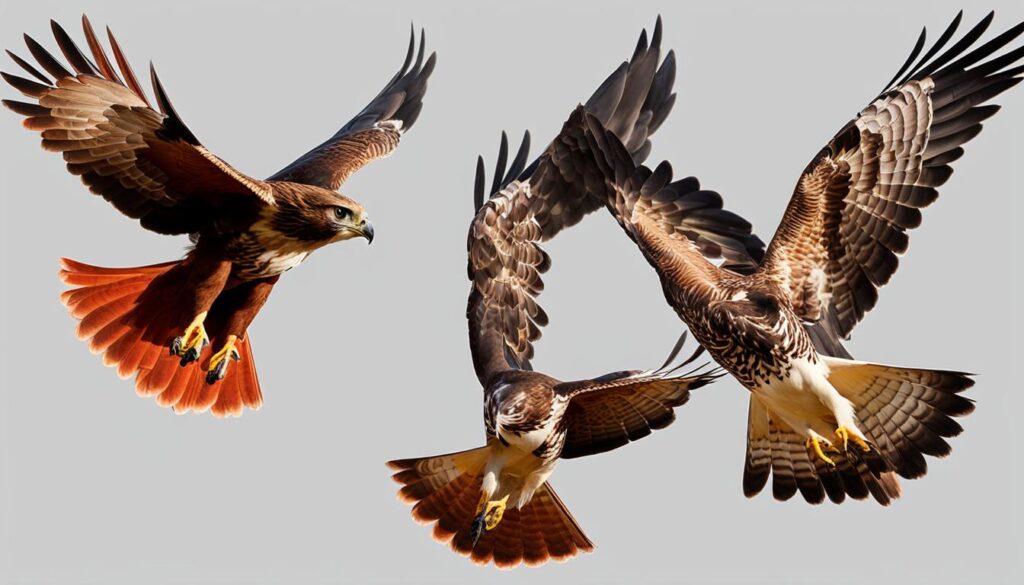
Broad-Winged Hawks, on the other hand, exhibit a unique behavior during migration. They form large flocks, known as “kettles,” when they gather and soar together in the sky. This behavior is especially prominent during their fall migration as they pass through Mexico and Central America. These kettles can consist of hundreds or even thousands of hawks, creating a breathtaking sight. During migration, Broad-Winged Hawks rely on thermals, rising columns of warm air, to gain altitude and cover long distances.
“The sight of a kettle of Broad-Winged Hawks is a true spectacle of nature. Thousands of these hawks soaring in the sky, forming a swirling vortex, is an awe-inspiring sight.” – Birdwatching enthusiast
The difference in hunting and migration behaviors between Red-Tailed Hawks and Broad-Winged Hawks reflects their unique adaptations and ecological roles. While Red-Tailed Hawks thrive as solitary hunters in diverse habitats, Broad-Winged Hawks rely on their social behavior and use of thermals to navigate their extensive migrations.
Comparison of Behaviors and Migration
| Red-Tailed Hawks | Broad-Winged Hawks | |
|---|---|---|
| Hunting Behavior | Solitary hunters | May hunt in groups during migration |
| Preferred Prey | Small mammals, birds, and reptiles | Small mammals and birds |
| Migratory Behavior | Individual or small group migration | Formation of large flocks (“kettles”) during fall migration |
| Migration Strategy | Relies on individual flight and navigation | Uses thermals for gaining altitude and covering long distances |
This table provides a direct comparison of the behaviors and migration patterns of Red-Tailed Hawks and Broad-Winged Hawks, highlighting the key differences between the two species.
Distinguishing Features of Red-Tailed and Broad-Winged Hawks
Red-Tailed Hawks and Broad-Winged Hawks can be distinguished by a range of physical characteristics, behaviors, and habitat preferences. These unique features are essential in identifying and appreciating these majestic birds of prey. Let’s delve into the distinguishing features of each species:
Physical Features
Red-Tailed Hawks have a reddish-brown coloration on their upperparts and white underparts. Their most prominent feature is their red tail, which is a key identifier. With a wingspan of approximately 40-56 inches and a larger body size, measuring around 18-26 inches in length, Red-Tailed Hawks are larger than Broad-Winged Hawks. In contrast, Broad-Winged Hawks have a brown upper body and a white underbody. They possess a banded black and white tail, which sets them apart from Red-Tailed Hawks. Broad-Winged Hawks are smaller, measuring around 13-17 inches in length, with a wingspan of about 31-35 inches.
Habitat and Distribution
Red-Tailed Hawks are adaptable and can be found in various habitats across North America. They thrive in open areas, woodlands, deserts, and mountains. Their wide distribution makes them common in both urban and rural landscapes. On the other hand, Broad-Winged Hawks have a more specific habitat preference. They typically prefer forested habitats, specifically large deciduous or mixed deciduous-evergreen forests. They breed primarily in the northeastern and central regions of North America and migrate to southern Mexico, Central America, and northern South America for the winter.
Behaviors and Migration
Red-Tailed Hawks are known for their solitary hunting behavior. They can often be seen perched on tall structures, scanning the surroundings for prey. They primarily feed on small mammals, birds, and reptiles. In contrast, Broad-Winged Hawks exhibit a unique behavior during migration. They form large flocks, known as “kettles,” and rely on thermals, rising columns of warm air, to gain altitude and cover long distances. This behavior is particularly prominent during their fall migration through Mexico and Central America.
| Red-Tailed Hawks | Broad-Winged Hawks | |
|---|---|---|
| Physical Features | Prominent red tail | Banded black and white tail |
| Habitat | Open areas, woodlands, deserts, mountains | Large deciduous or mixed deciduous-evergreen forests |
| Size | 18-26 inches in length, wingspan of 40-56 inches | 13-17 inches in length, wingspan of 31-35 inches |
| Migratory Behavior | Migrate individually or in small groups | Form large flocks during fall migration |
Conservation Status
When it comes to the conservation status of Red-Tailed Hawks and Broad-Winged Hawks, there are some notable differences. Red-Tailed Hawks are considered a species of least concern, meaning their populations are relatively stable and widespread throughout their range. These hawks are adaptable and can thrive in both urban and rural areas, which has contributed to their overall success. However, it is important to note that habitat loss and fragmentation can still pose threats to their populations in certain regions.
On the other hand, the conservation status of Broad-Winged Hawks is of greater concern. These hawks have experienced population declines in many parts of their range, particularly in the northeastern United States. The primary threats to their populations include habitat loss and fragmentation, as well as the impacts of climate change. They primarily breed in large deciduous or mixed deciduous-evergreen forests and rely on these habitats for their survival.
As we strive to protect and conserve these magnificent birds of prey, it is crucial to understand the unique challenges they face in different environments. Conservation efforts should focus on preserving and restoring suitable habitats for both Red-Tailed Hawks and Broad-Winged Hawks, as well as addressing the broader issues of habitat loss and climate change that impact their populations.
| Red-Tailed Hawks | Broad-Winged Hawks | |
|---|---|---|
| Conservation Status | Least Concern | Vulnerable |
| Population Stability | Relatively Stable | Declining |
| Habitat Preference | Adaptable to various habitats | Large deciduous or mixed deciduous-evergreen forests |
| Threats | Habitat loss, fragmentation | Habitat loss, fragmentation, climate change |
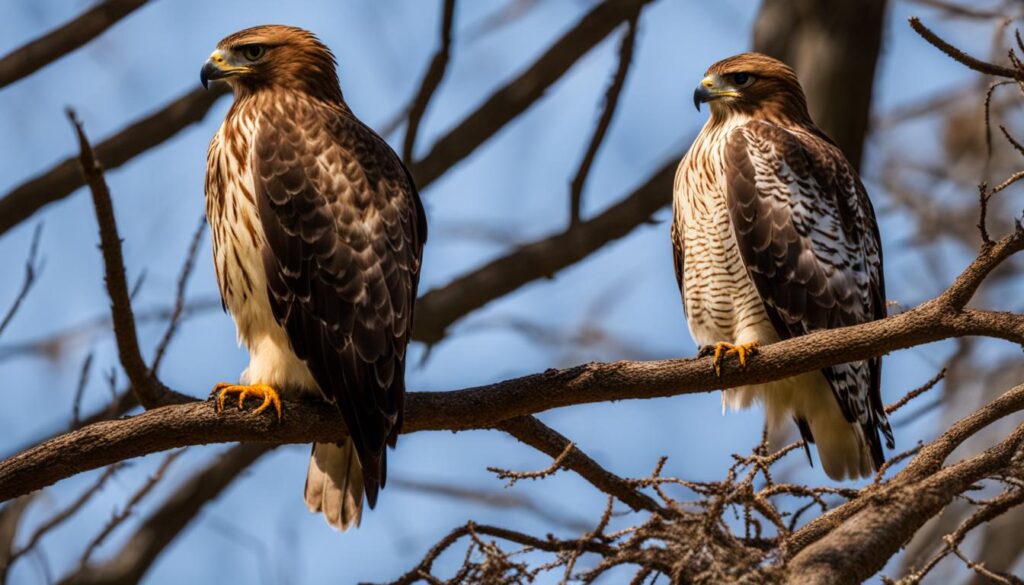
Summary:
- Red-Tailed Hawks are considered a species of least concern, with relatively stable populations and adaptability to various habitats. They face threats from habitat loss and fragmentation.
- Broad-Winged Hawks are experiencing population declines, particularly in the northeastern United States, and are vulnerable to habitat loss, fragmentation, and climate change. They prefer large deciduous or mixed deciduous-evergreen forests.
“Preservation of suitable habitats and addressing the broader challenges of habitat loss and climate change are key to the conservation of both Red-Tailed Hawks and Broad-Winged Hawks.”
Conclusion
In conclusion, the Red-Tailed Hawk and the Broad-Winged Hawk are two distinct species of hawks that can be easily differentiated by their physical characteristics, habitats, behaviors, and migration patterns. By understanding these differences, bird enthusiasts and nature lovers can enhance their knowledge and appreciation of these magnificent birds of prey.
The Red-Tailed Hawk, with its larger size, prominent red tail, and adaptability to various habitats, is a common sight across North America. On the other hand, the Broad-Winged Hawk, with its smaller size, banded tail, and preference for forested habitats, has a more limited range and is experiencing population declines in some areas.
Whether soaring through open areas or gliding through the forest canopy, both of these hawks play important roles in their ecosystems as top predators. Their distinct behaviors, such as the Red-Tailed Hawk’s solitary hunting and the Broad-Winged Hawk’s impressive “kettles” during migration, further add to their uniqueness.
By recognizing the distinguishing features and understanding the habits of the Red-Tailed Hawk and the Broad-Winged Hawk, we can better appreciate the diversity and beauty of nature’s winged wonders.
FAQ
What are the main differences between Red-Tailed and Broad-Winged Hawks?
Red-Tailed Hawks have a prominent red tail, while Broad-Winged Hawks have a banded tail. Red-Tailed Hawks are larger in size and have a broader wingspan compared to Broad-Winged Hawks. They also differ in their preferred habitats and migration patterns.
How can I identify a Red-Tailed Hawk?
Red-Tailed Hawks can be identified by their reddish-brown coloration on their upperparts, white underparts, and their prominent red tail. They are larger in size, measuring around 18-26 inches in length, with a wingspan of approximately 40-56 inches.
How can I identify a Broad-Winged Hawk?
Broad-Winged Hawks have a brown upper body and a white underbody. Their tails are banded black and white. They are smaller than Red-Tailed Hawks, measuring around 13-17 inches in length, with a wingspan of about 31-35 inches.
Where do Red-Tailed Hawks and Broad-Winged Hawks prefer to live?
Red-Tailed Hawks are adaptable and can be found in various habitats, including open fields, woodlands, deserts, and mountains. Broad-Winged Hawks prefer forested habitats, specifically large deciduous or mixed deciduous-evergreen forests.
How do Red-Tailed and Broad-Winged Hawks behave during migration?
Red-Tailed Hawks migrate individually or in small groups, while Broad-Winged Hawks form large flocks, known as “kettles,” during fall migration.
How do Red-Tailed and Broad-Winged Hawks reproduce?
Red-Tailed Hawks mate for life, build stick nests, and lay 2-3 eggs. Broad-Winged Hawks also build stick nests, but generally lay 1-3 eggs. Both species participate in incubation and care for their young until they fledge.
What is the conservation status of Red-Tailed and Broad-Winged Hawks?
Red-Tailed Hawks are considered a species of least concern, while Broad-Winged Hawks are experiencing population declines in some regions.
 Skip to main content
Skip to main content